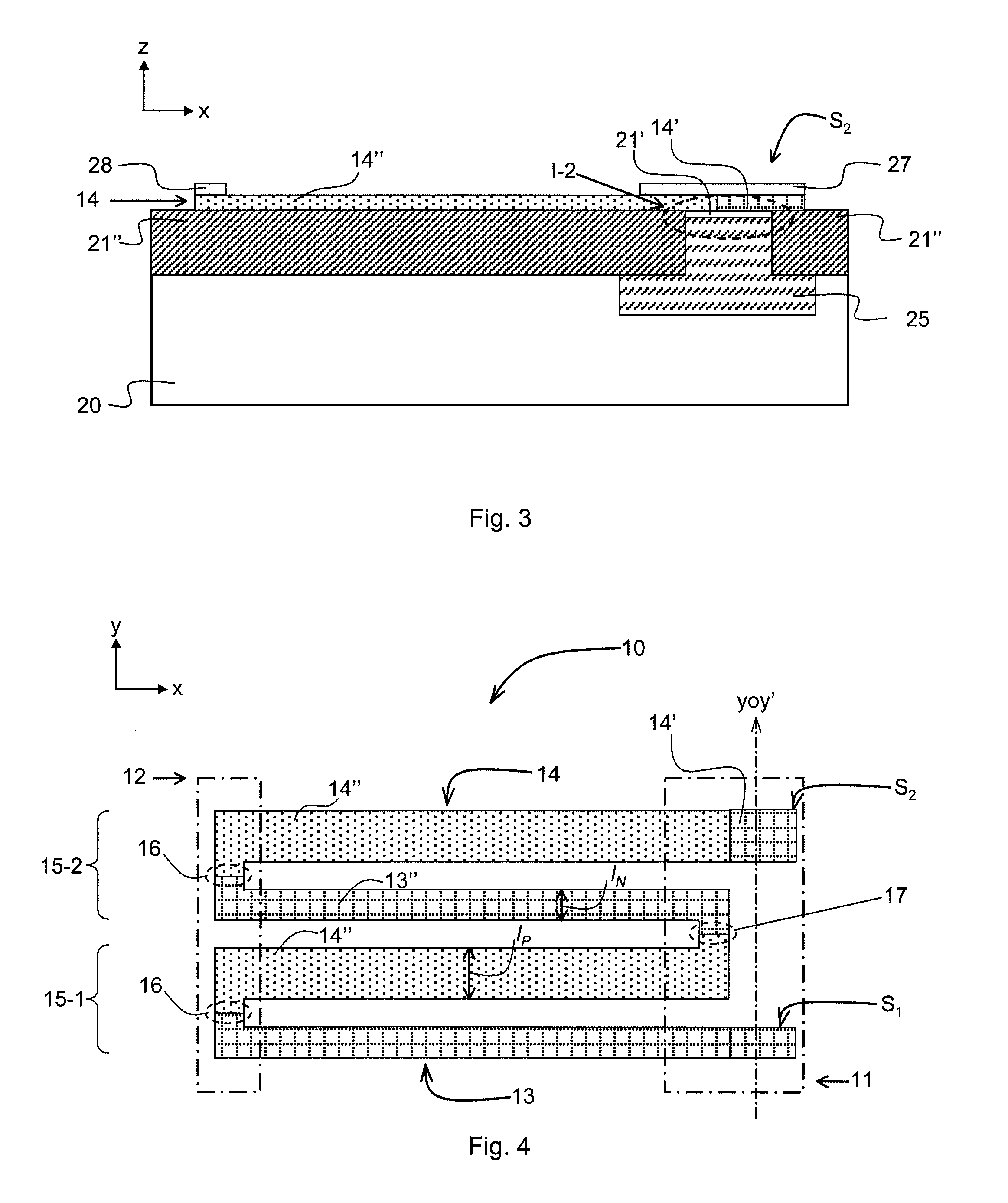Differential temperature sensor and its capacitors in cmos/bicmos technology
a technology of capacitors and temperature sensors, applied in the field of temperature sensors, can solve the problems of affecting the switching speed of microelectronic devices, the execution speed of integrated circuit functions, and the mobility impairment of carriers, so as to avoid drawbacks and avoid the effect of affecting the detection and communication of
- Summary
- Abstract
- Description
- Claims
- Application Information
AI Technical Summary
Benefits of technology
Problems solved by technology
Method used
Image
Examples
Embodiment Construction
[0032]In order to benefit from the advantages of a management system of the dissipated power in an integrated circuit, it is preferable for this system to be associated with passive thermal sensors that are precise and easy to produce.
[0033]It is therefore advantageous to take advantage of Seebeck effect differential sensors produced by means of integrated circuit technology while at the same time avoiding electric disturbances which may occur on the output terminals of these sensors.
[0034]To overcome these drawbacks, it is envisaged to produce a differential thermal sensor that is electrically insulated from the substrate and provided with a capacitor connected in parallel with at least one of the two output terminals of the sensor, preferably with both of the output terminals of the sensor.
[0035]FIG. 1 schematically illustrates a top view of an embodiment of a thermo-electric device 10 which tends to meet these requirements. In operation, device 10 is arranged in a temperature gra...
PUM
 Login to View More
Login to View More Abstract
Description
Claims
Application Information
 Login to View More
Login to View More - R&D Engineer
- R&D Manager
- IP Professional
- Industry Leading Data Capabilities
- Powerful AI technology
- Patent DNA Extraction
Browse by: Latest US Patents, China's latest patents, Technical Efficacy Thesaurus, Application Domain, Technology Topic, Popular Technical Reports.
© 2024 PatSnap. All rights reserved.Legal|Privacy policy|Modern Slavery Act Transparency Statement|Sitemap|About US| Contact US: help@patsnap.com










